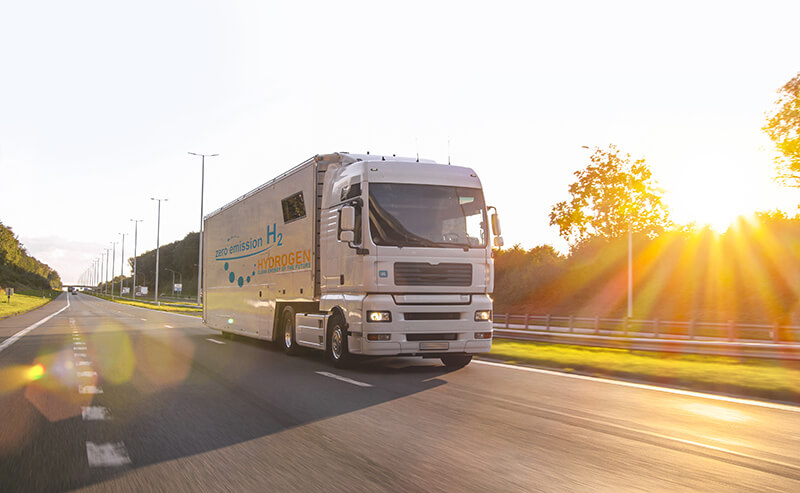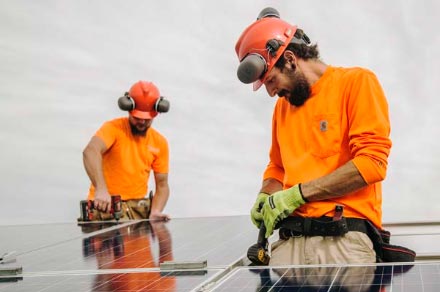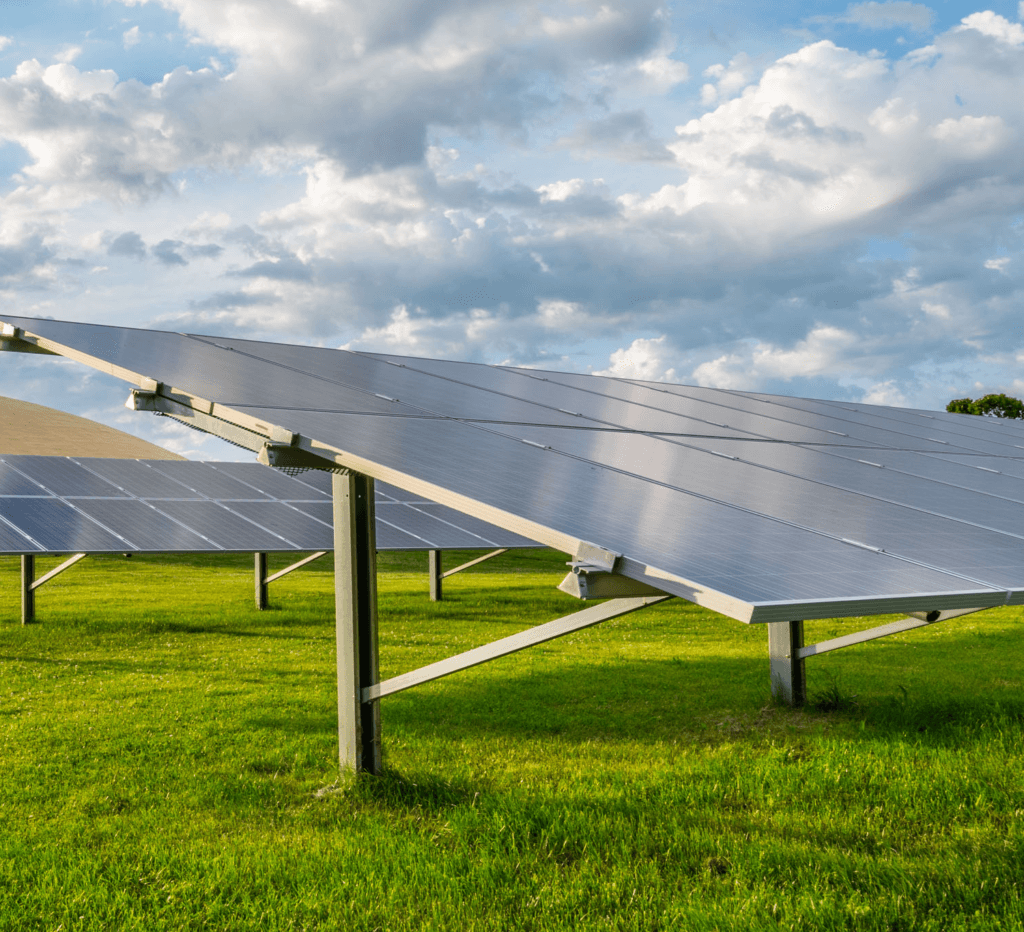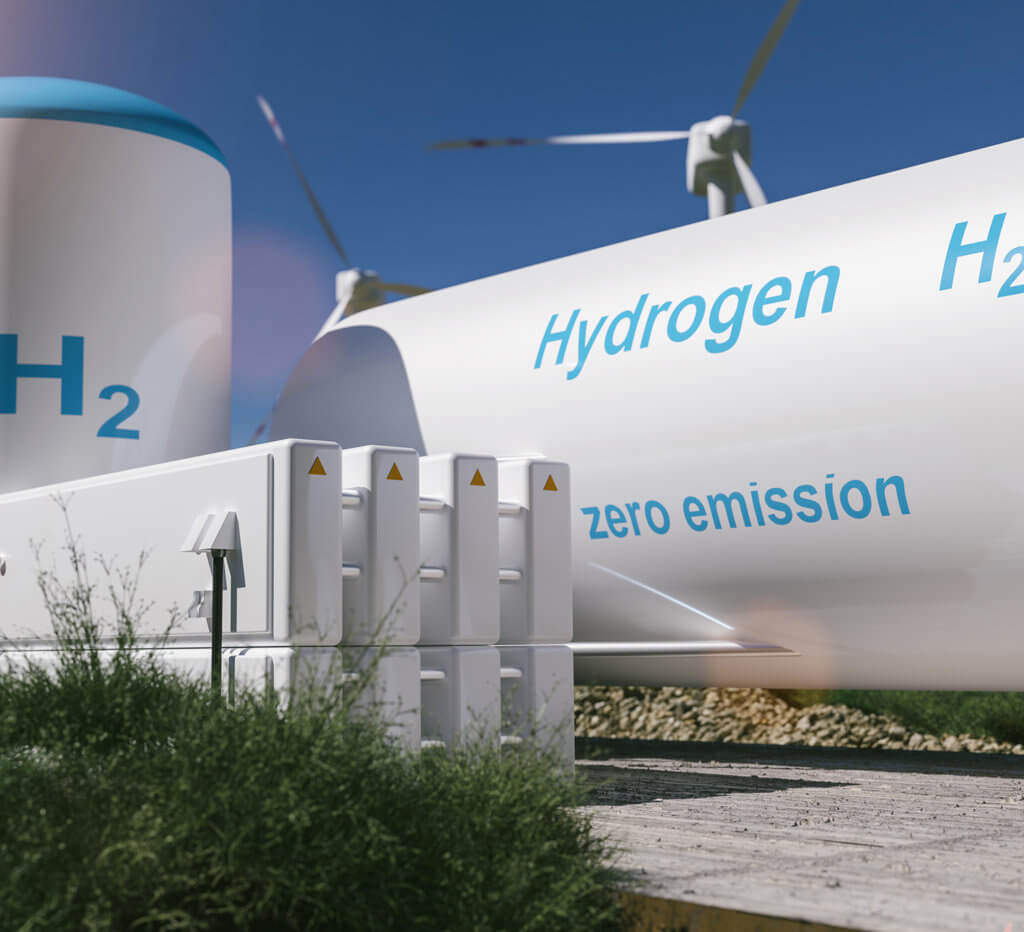Renewable Hydrogen and the Future of Clean Energy
Part III — Decarbonizing with Renewable Hydrogen
This three-part series explores how renewable hydrogen can help us achieve a decarbonized energy economy through conversation with Dr. Gregory Wilson, Ideal Energy’s subject matter expert on clean energy technology and renewable hydrogen.
This installment focuses on how we can decorbonize several energy sectors with renewable hydrogen. Find Part I of our series, The Renewable Energy Future here, and Part II, How Renewable Hydorgen Works here.

Dr. Gregory Wilson, an engineer by training, was the director of the National Center for Photovoltaics (NCPV) at the U.S. Department of Energy’s (DOE) National Renewable Energy Laboratory (NREL) from 2011 to 2018. Prior to that, he had a long career as an engineer in the chemical and semiconductor industries. He is now a consultant to Ideal Energy in the development of a renewable hydrogen economy in Iowa.
The transition to a renewable hydrogen economy is already underway. In the last year, several huge hydrogen projects have been announced. The HyGreen Provence project in France will have a 1.5 GW capacity, powered by solar energy, when it is completed in 2021. The NortH2 project in the Netherlands is expected to have a 3–4 GW capacity by 2030 and a 10 GW capacity by 2040. The Asian Renewable Energy Hub will be powered by 12 GW of dedicated solar and wind in Australia connected via undersea high voltage transmission lines to hydrogen electrolyzers plants in Indonesia and Singapore.
Projects like these signal a path toward widespread use of hydrogen beyond energy storage and ammonia production. With enough hydrogen production, it will be possible to use hydrogen to decarbonize rail, heavy trucking, ocean-going ships, heavy industry, and even air travel.
Decarbonizing Rail
Wilson thinks electrifying railroads in the U.S. is unrealistic due to the scale of the work involved. “Putting electrical lines over the rail lines [even] in Iowa – it’s not happening,” said Wilson. Instead, he believes, we need to make a liquid fuel that is completely carbon neutral. There are two ways to do this.
One is to use hydrogen or a hydrogen-based fuel like ammonia. These fuels could be burned directly in a modified internal combustion engine, or used to power a fuel cell. Fuel cells are the more attractive option because of their higher efficiency compared to combustion.
The other method is to reproduce current liquid fuels, including diesel, gasoline, and jet fuel, with carbon-neutral equivalents. A number of oil companies like Royal Dutch Shell, BP, and Total plan to do this using captured carbon supplied by direct air capture (DAC) technology. DAC, which draws CO2 directly from the atmosphere, is very much still in the developmental stage, however.
Producing carbon-neutral biofuels is another possibility. “We have an enormous amount of captured carbon from agriculture and from normal routes of biomass,” said Wilson. Refining biomass feedstocks into a high quality diesel requires hydrogen. With renewable biomass feedstocks and renewable hydrogen in the refining process, the end result is a carbon-neutral biofuel. There is probably not enough cheap, high-quality biomass to replace all fossil fuels, but enough is available to decarbonize part of the transport sector.
Decarbonizing Ships
Ocean going ships will need to be powered by a fuel that can be converted to electricity in a fuel cell. Ammonia is an excellent option because it has a significantly higher energy density than hydrogen.
Decarbonizing Heavy Transportation
“What will happen with transport is you need to have either full electrification or a completely renewable fuel,” said Wilson. Batteries have become cheap enough and good enough that there is no longer much incentive to power passenger vehicles with hydrogen. As battery capacity increases, prices go down, and recharge times are reduced, sales will only accelerate. “Light vehicle transport is almost certainly going to switch to batteries.”
Heavy trucking presents a greater challenge than passenger cars and light trucks. Batteries with the capacity to power a truck hauling 80,000 pounds 600–700 miles are prohibitively large and heavy. The same is true of heavy machinery. No battery technology on the horizon is anywhere close to solving that problem.
Wilson thinks the solution for trucking is similar to the solution for rail: a carbon-neutral fuel. That could be hydrogen or ammonia powering a fuel cell, or it could be carbon-neutral biodiesel refined with renewable hydrogen. The hydrogen fuel cell approach is gaining significant traction both in the U.S. and overseas. Carbon-neutral biofuels will likely be implemented as well, because it will likely take decades to replace trucking and machinery fleets worldwide.

Decarbonizing Aircraft
Wilson believes the solution for most air transport will almost certainly be biofuels. Small planes flying short-haul flights could be electrified, but range and size will be severely limited. “Air transport will not be completely electrified anytime soon,” said Wilson.
Although combustion is less efficient than fuel cells, Wilson believes high-efficiency turbines burning jet fuel made from biomass is a viable long-term solution. “NREL, my old lab, is a pretty big believer that you can meet all the world’s demand for jet fuel with the carbon coming from bio sources,” said Wilson. “The hydrogen that you need to refine it into jet fuel would come from electrolysis, from renewable electricity.”
Replacing Fuels in Heavy Industry
Heavy industry is a major source of CO2. Steel and iron production alone is responsible for 7–9% of global carbon emissions. Hydrogen is an excellent fuel for a variety of industrial applications where very hot flames are required, but electric arc furnaces are not ideal. “Hydrogen is viewed as a really good way to switch industrial heat sources from carbon based fuels to a non-carbon based fuel,” said Wilson.
There are industrial processes other than combustion where hydrogen can help decarbonize industry. In the steelmaking industry, for example, blast furnaces feeding basic oxygen furnaces are being replaced by electric arc furnaces due to environmental regulations and changing feedstocks. Blast furnaces use iron ore as a feedstock, while electric arc furnaces use scrap steel.
As the quality of scrap steel continues to decrease, virgin iron has to be added to dilute the contaminants. In the past, blast furnaces were the primary tool used to make iron from iron ore. Now, the steel industry is increasingly using direct reduced iron (DRI) as its source of virgin iron. DRI is made by reducing iron ore to iron using syngas, which contains both hydrogen and carbon monoxide. No melting is involved. Right now natural gas is used as a feedstock, but renewable hydrogen could take its place.
Long-term Energy Storage
The need for seasonal storage of energy will also drive development of hydrogen-based fuels, because batteries are not well suited to long-term storage. Here, again, ammonia is an excellent candidate.
“Batteries are good for a couple days of storage,” Wilson explained. “Beyond that you want to convert electricity to chemical bonds.” For short-term storage of days or weeks, hydrogen is ideal. For long-term storage, ammonia is better because it is denser, less likely to dissipate, and the infrastructure to store and transport it is widespread.
Another option is methane made from biomass sources – if it can be produced cheaply enough. Like hydrogen and ammonia, methane can be converted directly to electricity via fuel cells, avoiding the inefficiencies of combustion. It can also, of course, be pumped into the existing gas grid. Renewable hydrogen could be blended with biomethane for transport, storage, or use in the grid.
Building Heat
Wilson thinks residential, commercial, and industrial buildings will eventually switch to electric air source heat pumps for space and water heating. In some applications, like high altitude, ground source heat pumps may be a better option. Meanwhile, combustion systems fueled with a mix of renewable hydrogen and biomethane will likely be in service for many years to come.
The Big Energy Picture
Wilson sees the transition to a decarbonized world not as a leap, but as a sequence of steps – with hydrogen playing a part in each.
The first step is producing hydrogen from wind and solar on a commercial scale. Once wind farm and solar array owners see a profitable path to producing hydrogen, more and more projects will be developed. Initially, most of the renewable hydrogen produced will likely be used for energy storage.
The next step is meeting the current demand for hydrogen – and the ammonia made from it – with renewable hydrogen. This would eliminate all of the carbon emissions associated with producing hydrogen from methane or coal. Investing in the infrastructure necessary to do that will further drive down the cost of renewable hydrogen and also create the production capacity necessary for biofuel production.
“Those are critical steps in showing the industrial world how they’re going to make money from renewable fuels,” said Wilson.
The final step is using renewable hydrogen to make renewable ammonia and biofuels on a big scale. This could decarbonize most, if not all of, industry. It could also decarbonize most of transport, including rail, ocean freight, and aircraft. At that point, there would be very few areas of the energy economy left to decarbonize.
Wilson concluded, “When you fully decarbonize electricity, fully decarbonize transport, fully decarbonize industry, decarbonize the smaller ones like building heat – you decarbonize the world.”
In collaboration with the Iowa Economic Development Authority, Ideal Energy is charting a path to a green hydrogen economy in Iowa and beyond. We’re developing a new value chain that will bring the state’s resources and infrastructure together to build a resilient and robust energy future. Learn more here.








